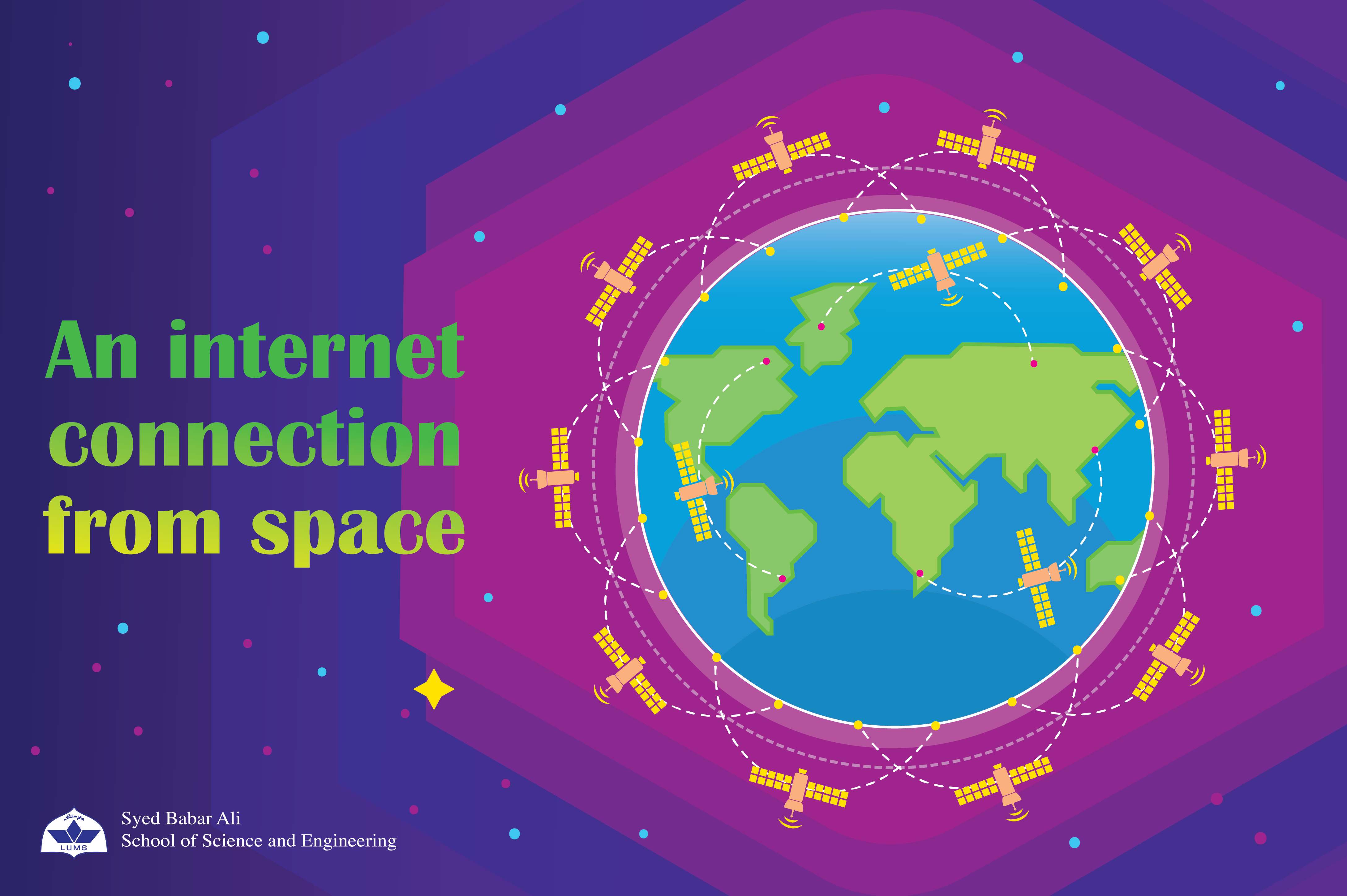
An Internet Connection from Space!
Communication has been at the heart of our survival. We itch to be heard, and to be understood. In modern times, the need to communicate has seen a reincarnation in that it is not only still part of our biological construct but also our civic and technological design altogether. Couple the fact that we can beam electronic signals through waves of energy and that the Earth is round, making it impossible for a beam of precious signals that inherently moves in a straight line, to follow the curves path of our world’s contours. We needed something better – we needed satellites!
In this work, Dr. Naveed ul Hassan and his co-authors worked out the energy efficiency of a satellite network coupled with ground infrastructure and compared it with the energy efficiencies of Traditional Terrestrial Heterogeneous (TTH) and Long-Term Evolution (LTE) networks (in other words – older technology). For an increasing cell density, it was shown that the satellite-terrestrial network performs better in terms of energy efficiency as compared to the TTH and LTE networks. These results are promising and show that satellite networks can complement terrestrial networks for providing communication resources to the users.
Communication satellites have been in service for a long time. They are used to provide communication services to far off and difficult to reach places. Conventional satellites have been large-sized, expensive, and very difficult to deploy. They are also very far away, which introduces significant lag. With the recent uprise of the Internet of Things (IoT) and wireless networks, the service requirements have changed. High data rates with low latency are required, and the current ground-based infrastructure is already overloaded. Due to these circumstances, a rise to the development of Low Earth Orbit (LEO) satellites, which have a lot less lag and better bandwidth availability. These satellites are deployed as Dense Small Satellite Networks (DSSN), across the globe, covering a large fraction of our planet at any given time.
These satellite networks have many advantages in telecommunications. Their most crucial benefit is extending coverage to areas that are otherwise difficult to cover with land infrastructure. They also provide low-latency transmission as compared to satellites in higher orbits. There is an exponential increase in the number of connected devices. Satellites can be deployed alongside ground infrastructure to support a massive number of devices. Satellite networks can provide the data rate and bandwidth requirements in areas where there is a sudden increase in network traffic and the ground infrastructure becomes loaded. Satellite networks also complement GPS systems to provide accurate locations for location-based services and can be used to cache data for reducing latency.
LEO satellites do not have a stationary footprint on the ground. Therefore, to use them in telecommunications, the satellite network infrastructure needs to be carefully planned. Satellites could form a constellation with identical satellites or clusters with non-identical satellites performing different functions. The orbital pattern of the satellites could be set as polar, rosette or hybrid. The inter-satellite communication could be based on radio frequency links, optical wireless communication links or visible light communication links. The satellite to ground contact could be either direct, could utilize a space or ground relay, or could be hybrid to utilize both types of relays.
Some technologies will aid the adoption of satellite networks in communications. Owing to the changing distances and positions between satellites, they should be fitted with intelligent, steerable, and high gain antennas. Multiple access techniques should be utilized for satellite networks where there should be provision to reuse frequency resources. Satellite networks are solar-powered, and their energy consumption characteristics are predictable because of known trajectories. Solar power optimization can be used to provide the required energy. To cater flexibility and advancement in network design and operation, satellites systems should be upgradeable to cater for new functionalities to be added remotely without changing the expensive hardware. Satellite network deployment should be optimized for resources such as capacity, power, latency and quality.
Reference:

